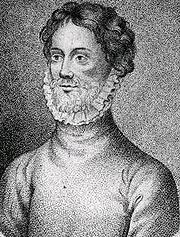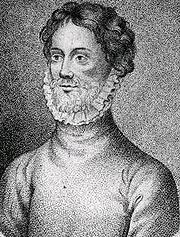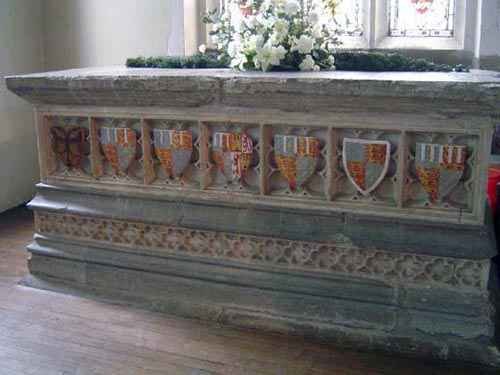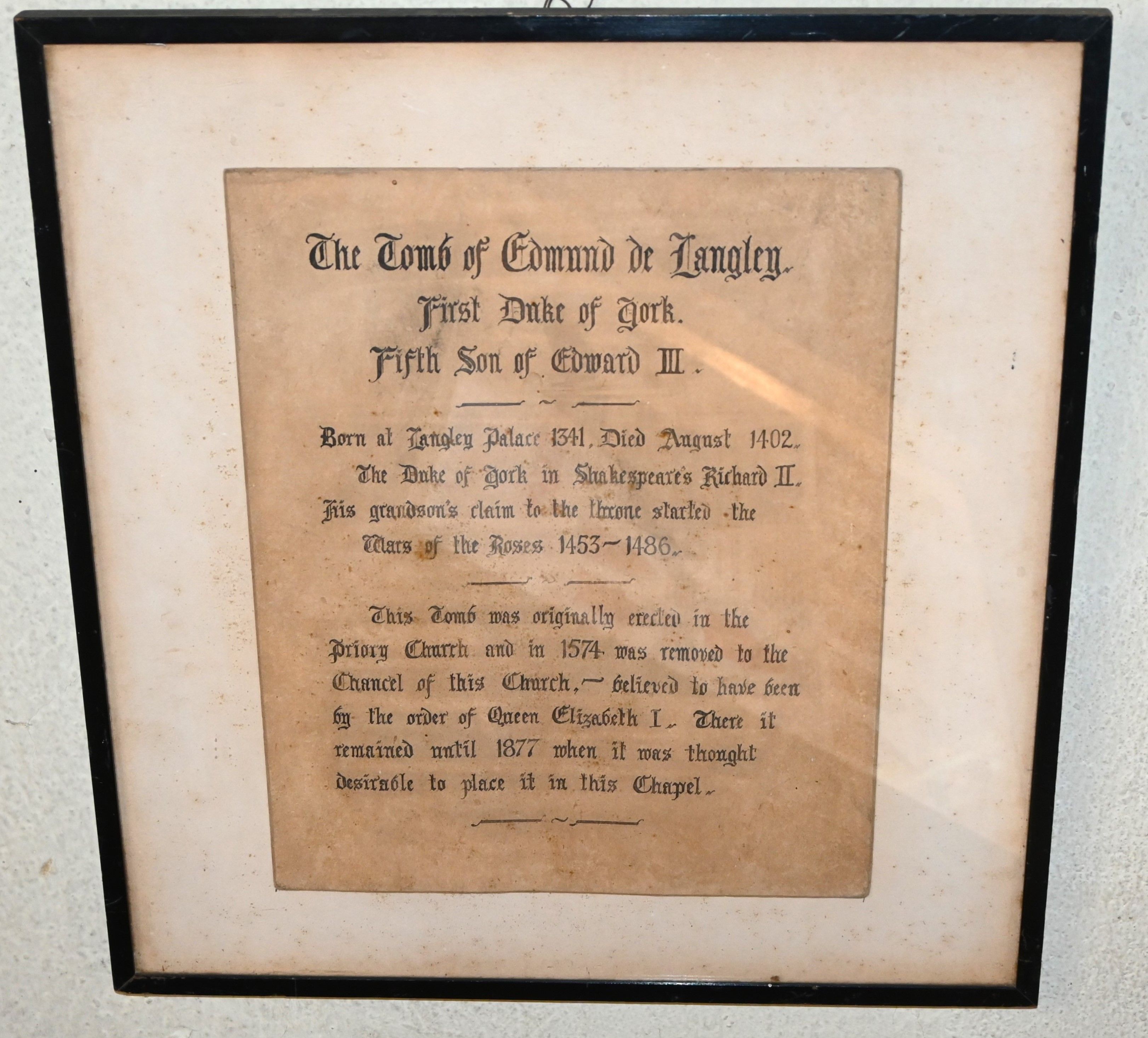Edmund was the seventh of twelve children and fifth of seven son of King Edward III of England and Philippa of Hainault, brother to Edward the Black Prince and John of Gaunt. Grandson of Edward II King of England and Isabella of France, William I Count of Hainhaut and Joan of Valois.
Edmund was the husband of Isabella, the daughter of King Petro of Castile and Maria de Padilla, and the sister of his brother, John of Gaunt's second wife. They had two sons and one daughter:
* Edward of Norwich, 2nd Duke of York
* Richard of Conisburgh, 3rd Earl of Cambridge, executed for treason
* Constance of York, ancestor of Queen Anne Neville, the wife of Richard II
Isabel died in 1392, Edmund married his cousin, Joan Holland. She was the granddaughter of Joan of Kent, Princess of Wales, and the great granddaughter of Edmund of Woodstock and the 1st Earl of Kent, the half brother of Edmund's grandfather, Edward II. She was also the sister of Margaret Holland who married John of Gaunt's son, John Beaufort. This marriage was intensely woven with intertwined relationships. They had no issue.
Edmund, as were his peers and siblings, was named after his birth location, Edmund was born at Langley, and became known as Edmund of Langley.
Edmund was granted the lands belonging to his godfather, Richard FitzAlan, the Earl of Surrey, at Richard's death. His father made him a Knight of the Garter in 1362, and Earl of Cambridge in 1362 at the age of twenty-one, finally becoming the Duke of York in 1385. Edmund also became the Constable of Dover Castle and the Warden of Cinque Ports, Keeper of the Realm and Custodian of the Realm.
King Richard II left England for his Irish campaign when Henry Bolingbroke landed in Yorkshire to take the throne. Edmund gathered an army to resist but ended up joining forces with Bolingbroke, and was richly rewarded for his loyalties which extended to King Henry IV.
Edmund of Langley died in his birthplace, and was buried there, in the church of the friars. Originally interred in the Church of the Friary at Langley, the remains of the Duke and his wife were brought to All Saint's, King's Langley, about the year 1574. Contemporary historians and genealogists agree with Evans' view that the skeleton in the leaden coffin is Anne Mortimer's. His dukedom passed to his eldest son, Edward.
Edmund was the seventh of twelve children and fifth of seven son of King Edward III of England and Philippa of Hainault, brother to Edward the Black Prince and John of Gaunt. Grandson of Edward II King of England and Isabella of France, William I Count of Hainhaut and Joan of Valois.
Edmund was the husband of Isabella, the daughter of King Petro of Castile and Maria de Padilla, and the sister of his brother, John of Gaunt's second wife. They had two sons and one daughter:
* Edward of Norwich, 2nd Duke of York
* Richard of Conisburgh, 3rd Earl of Cambridge, executed for treason
* Constance of York, ancestor of Queen Anne Neville, the wife of Richard II
Isabel died in 1392, Edmund married his cousin, Joan Holland. She was the granddaughter of Joan of Kent, Princess of Wales, and the great granddaughter of Edmund of Woodstock and the 1st Earl of Kent, the half brother of Edmund's grandfather, Edward II. She was also the sister of Margaret Holland who married John of Gaunt's son, John Beaufort. This marriage was intensely woven with intertwined relationships. They had no issue.
Edmund, as were his peers and siblings, was named after his birth location, Edmund was born at Langley, and became known as Edmund of Langley.
Edmund was granted the lands belonging to his godfather, Richard FitzAlan, the Earl of Surrey, at Richard's death. His father made him a Knight of the Garter in 1362, and Earl of Cambridge in 1362 at the age of twenty-one, finally becoming the Duke of York in 1385. Edmund also became the Constable of Dover Castle and the Warden of Cinque Ports, Keeper of the Realm and Custodian of the Realm.
King Richard II left England for his Irish campaign when Henry Bolingbroke landed in Yorkshire to take the throne. Edmund gathered an army to resist but ended up joining forces with Bolingbroke, and was richly rewarded for his loyalties which extended to King Henry IV.
Edmund of Langley died in his birthplace, and was buried there, in the church of the friars. Originally interred in the Church of the Friary at Langley, the remains of the Duke and his wife were brought to All Saint's, King's Langley, about the year 1574. Contemporary historians and genealogists agree with Evans' view that the skeleton in the leaden coffin is Anne Mortimer's. His dukedom passed to his eldest son, Edward.
Family Members
-
![]()
Edward "The Black Prince" Plantagenet
1330–1376
-
Lady Isabel Plantagenet de Coucy
1332–1382
-
![]()
Joan Plantagenet
1334–1348
-
![]()
Prince William Of Hatfield
1336–1337
-
![]()
Lionel "Duke of Clarence" Plantagenet
1338–1368
-
![]()
John of Gaunt
1340–1399
-
![]()
Lady Blanche de la Tour Plantagenet
1342–1342
-
![]()
Mary de Waltham
1344–1362
-
![]()
Margaret De "Lady of Pembroke" Plantagenet de Hastings
1346–1361
-
![]()
William de Windsor
1348–1348
-
![]()
Prince Thomas Woodstock "Duke of Gloucester" Plantagenet
1355–1397






















